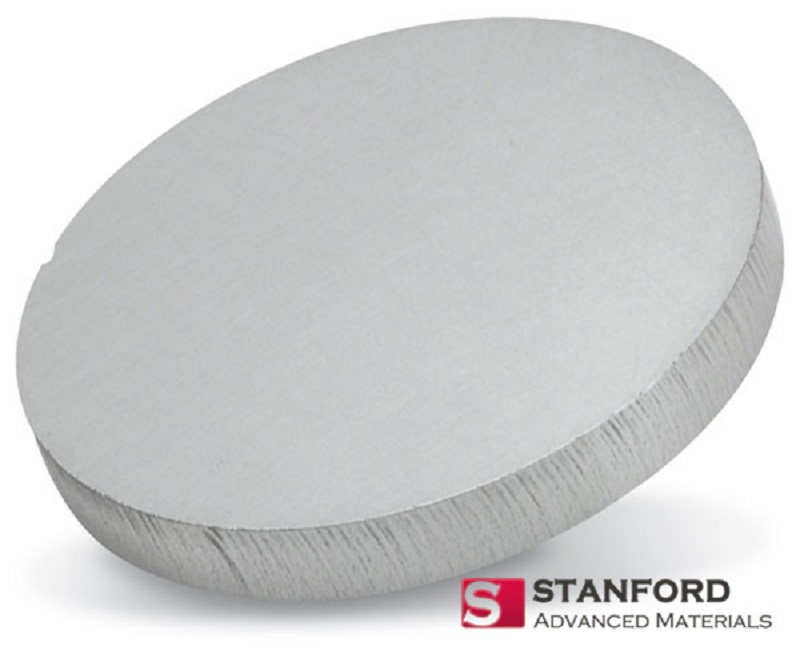What is an AZO Sputtering Target?
AZO sputtering targets are also referred to as aluminum-doped zinc oxide sputtering targets. Aluminum-doped zinc oxide is a transparent conducting oxide. This oxide is insoluble in water but is thermally stable. AZO sputtering targets are typically used for thin-film deposition.
Doping is a process that involves intentionally adding impurities to the crystal structure of a semiconductor. This is done to improve the properties of the semiconductor. In the case of aluminum-doped zinc oxide, aluminum is added to zinc oxide to modify its properties. This makes AZO the extrinsic semiconductor while zinc oxide is the intrinsic semiconductor. Doping zinc oxide with aluminum controls its electrical properties, causing it to be an excellent replacement for indium-tin oxide.
Two types of AZO sputtering targets can be used in the thin-film deposition. One of them is metallic while the other is ceramic. It would interest you to know that the ceramic type is more often used than the metallic type. This is because the ceramic type produces thin-film deposits with superior quality.
Characteristics of AZO Sputtering Targets
Now that we have background knowledge on AZO sputtering targets, let’s look at their characteristics. What is it about AZO sputtering targets that make them stand out and why might you need to pay more attention to them? Below are some of the characteristics of AZO sputtering targets.

Optical Transmittance
AZO sputtering targets have a large optical transmittance. This means a high fraction of incident light can pass through them. For this reason, they are said to be more transparent than undoped zinc oxide sputtering targets.
Piezoelectric Properties
AZO sputtering targets are piezoelectric. This means that they accumulate electrical charges when mechanical stress is applied to them. In addition to accumulating electrical charges in response to mechanical stress, AZO sputtering targets can produce an internal mechanical strain in response to an electrical field.
Bandgap
AZO sputtering targets have a bandgap of about 3.35 to 3.37 eV. This is the minimum amount of energy needed to excite an electron, bringing it to its free state. The bandgap determines the conductivity of this sputtering target.
Conductivity
AZO sputtering targets have a high electrical conductivity. This makes them so much better than undoped zinc oxide sputtering targets for applications that require a high electrical conductivity.
Thermal Stability
AZO sputtering targets have high thermal stability. This high thermal stability allows them to be used for high-temperature applications.
Use of Magnetron Sputtering Technology on AZO Sputtering Targets
Magnetron sputtering is a method of thin-film deposition. In this method, the AZO sputtering target is hit with energetic ions, causing the ejection of AZO into space. The AZO particles eventually reach the substrate material and condense into a thin film. To enhance this process, a strong magnetic field is placed close to the AZO sputtering target. This ensures that the energized ions collide with the AZO sputtering targets more effectively, creating high-quality thin films.
Applications of AZO Sputtering Targets
Thin-film Photovoltaics
As mentioned earlier, aluminum-doped zinc oxide has a large optical transmittance and a high electrical conductivity. This makes it suitable for thin-film photovoltaics. Thin-film photovoltaics use semiconductors to convert light into electricity. In this case, the AZO sputtering target provides the AZO target atoms used to make the thin films on the photovoltaic. The AZO thin film layer permits photons to enter the solar cells. The photons generate electrons which the AZO thin film transports.

Liquid-Crystal Displays (LCDs)
AZO sputtering targets are sometimes employed in making LCDs. Although OLEDs are gradually replacing LCDs, LCDs are used in making computer monitors, television screens, phone screens, digital cameras, and instrument panels. They generally do not consume much power and as such do not emit much heat. In addition, because AZO is non-toxic, LCDs do not emit toxic radiation.
Light Emitting Diodes (LEDs)
An LED is a semiconductor that produces light when current flows through it. Since aluminum-doped zinc oxide is a semiconductor with high electrical conductance and optical transmittance, it is usually used in making LEDs. LEDs can be used for illumination, signs, data transmission, machine vision systems, and even biological detection.
Architectural Coatings
AZO sputtering targets are used in various architectural coatings. They provide the target atoms for the architectural coatings.
Conclusion
Aluminium-doped zinc oxide is used for applications that require a transparent and electrically conductive material. Research is ongoing on how AZO sputtering targets can be utilized in more industries. For more information about sputtering targets, please visit https://www.sputtertargets.net/.




